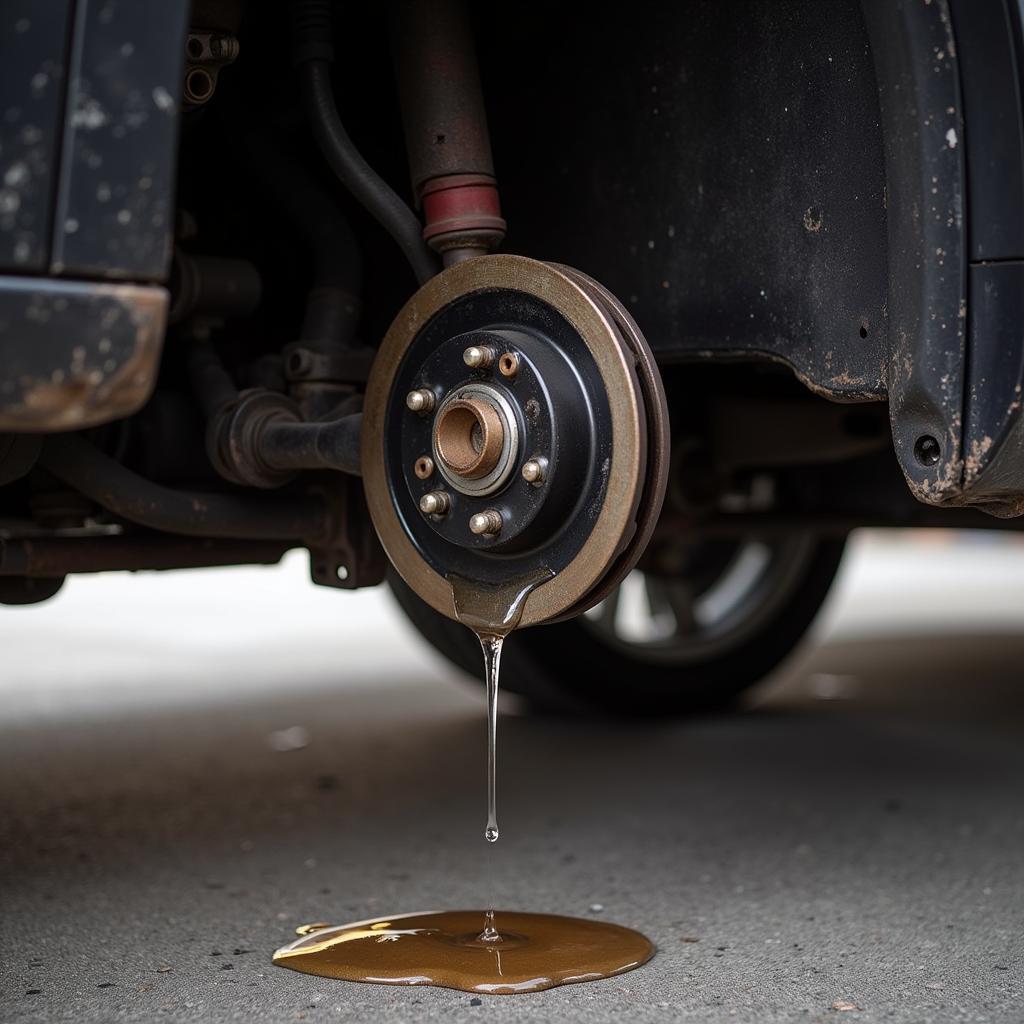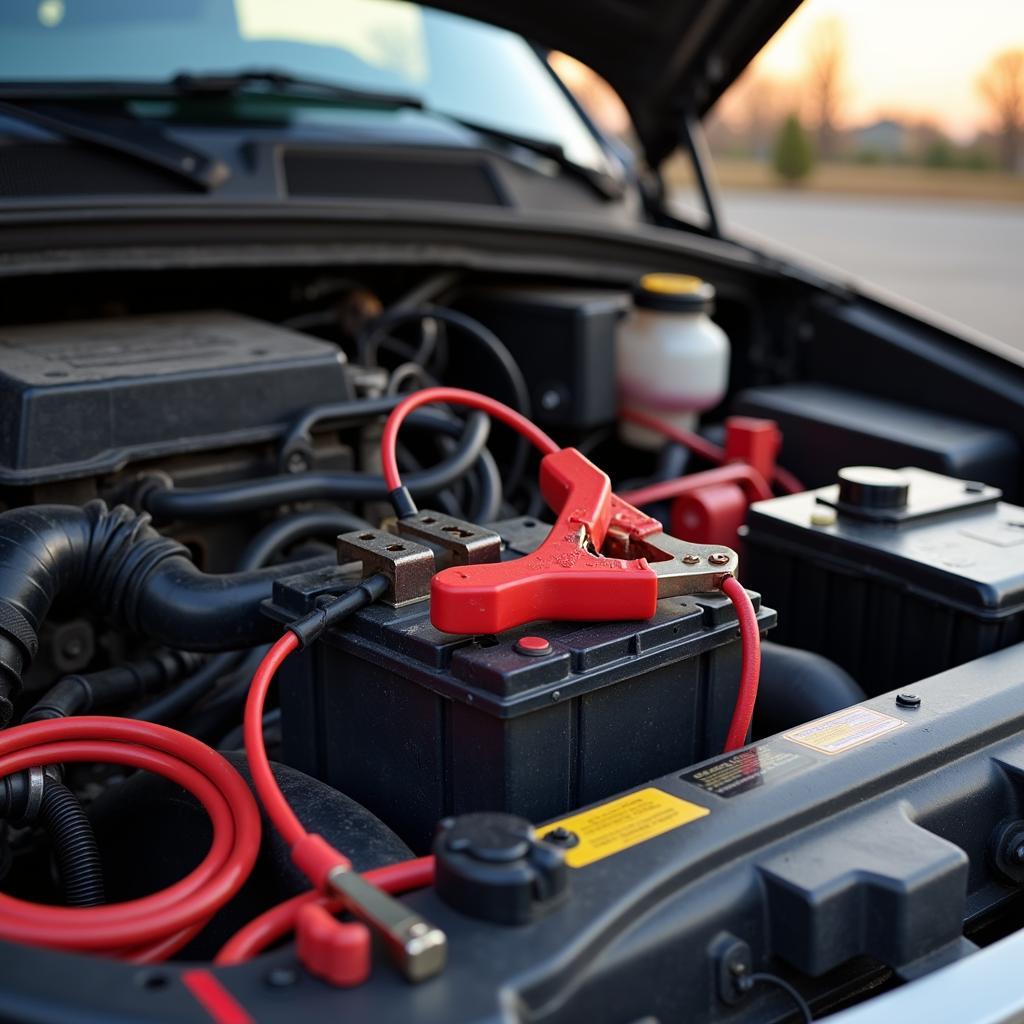The dreaded brake fluid warning light on your Audi A5 dashboard can trigger a wave of anxiety for any driver. It’s a stark reminder that a crucial safety system might be compromised. But don’t panic! Understanding what triggers this warning and what steps to take can help you address the issue effectively and safely.
This comprehensive guide delves into the common causes of the Audi A5 brake fluid warning, equipping you with the knowledge to resolve the issue.
Why is My Audi A5 Brake Fluid Light On?
Your car’s braking system relies on hydraulic pressure to function properly. Brake fluid, a special type of hydraulic fluid, is the lifeblood of this system. When the brake fluid warning light illuminates, it usually signifies a drop in this essential fluid, potentially jeopardizing your braking performance.
Here’s a closer look at the common culprits behind the Audi A5 brake fluid warning:
-
Worn Brake Pads: One of the most frequent causes is worn brake pads. As your brake pads wear down over time, the brake calipers need to extend further to engage the rotors. This extension requires more brake fluid, leading to a drop in the reservoir level and triggering the warning light.
-
Brake Fluid Leak: A leak in your brake system, whether from a brake line, hose, caliper, or the master cylinder, can cause a rapid and dangerous drop in brake fluid level.
-
Worn Brake Hoses: Over time, the rubber in your brake hoses can deteriorate, leading to cracks or leaks. This is especially true in areas with extreme temperatures.
-
Faulty Brake Master Cylinder: The master cylinder is the heart of your braking system. If it’s malfunctioning or has a leak, it can disrupt brake fluid pressure and trigger the warning.
-
Sensor Malfunction: In some cases, the brake fluid level sensor itself might be faulty, providing inaccurate readings and triggering a false warning.
What to Do When Your Audi A5 Brake Fluid Warning Light Comes On
If your Audi A5 brake fluid warning light comes on, it’s crucial to take immediate action to ensure your safety and prevent further damage to your vehicle:
-
Pull Over Safely: As soon as it’s safe, pull your car over to the side of the road and come to a complete stop. Driving with low brake fluid is incredibly risky.
-
Check the Brake Fluid Level: With the engine off, locate the brake fluid reservoir under the hood. It’s usually a translucent plastic container with a black cap labeled “Brake Fluid.” Check the fluid level. If it’s low or empty, you’ll need to add more.
-
Carefully Add Brake Fluid (If Necessary): If you have brake fluid on hand and feel comfortable doing so, carefully add the correct type of brake fluid to the reservoir, bringing it to the “Max” line. Avoid overfilling.
-
Inspect for Leaks: Visually inspect the area around the master cylinder, brake lines, and calipers for any signs of leaks, such as wet spots or dripping fluid.
 Audi A5 Brake Fluid Leak
Audi A5 Brake Fluid Leak
- Seek Professional Help: Whether you added brake fluid or not, it’s vital to have your car towed to a qualified mechanic immediately for a thorough inspection. Driving with a brake fluid warning light is never advisable and could lead to a complete brake failure.
Can I Still Drive My Audi A5 With the Brake Fluid Warning Light On?
The short answer is no. While you might be tempted to drive a short distance to a mechanic, doing so is incredibly dangerous. A drop in brake fluid level significantly compromises your braking ability, increasing your risk of an accident. It’s always best to err on the side of caution and have your vehicle towed.
Tips for Preventing Future Brake Fluid Warnings
- Regular Brake Inspections: Adhere to your Audi A5’s recommended maintenance schedule and have your brakes inspected by a qualified mechanic at least once a year or as recommended in your owner’s manual.
- Quality Brake Pads: Invest in high-quality brake pads that are designed for your Audi A5’s make and model. Higher quality pads tend to last longer and wear more evenly.
- Be Mindful of Driving Habits: Aggressive driving habits, such as hard braking and rapid acceleration, can accelerate brake pad wear.
- Address Warning Lights Promptly: Never ignore any warning light on your dashboard, especially one related to your brakes.
Frequently Asked Questions About Audi A5 Brake Fluid Warnings
Q: What type of brake fluid does my Audi A5 use?
A: Audi vehicles typically use DOT 4 brake fluid. However, it’s essential to check your owner’s manual or the brake fluid reservoir cap for the specific type recommended for your A5 model year.
Q: How much does it cost to fix a brake fluid leak in an Audi A5?
A: The cost of repair can vary greatly depending on the source of the leak, the extent of the damage, and labor costs in your area. A minor leak might be a relatively inexpensive fix, while a major issue with the master cylinder could be more costly.
Q: Can I top up my brake fluid myself?
A: While you can temporarily top up the brake fluid to get your car to a mechanic, it’s generally recommended to have a professional diagnose and fix the underlying issue.
Q: How often should I change my brake fluid?
A: Audi recommends changing your brake fluid every 2 years or 20,000 miles, whichever comes first. However, consult your owner’s manual for specific recommendations for your model.
Q: Is it normal for my brake fluid level to drop slightly over time?
A: Some slight drop in brake fluid level is normal as your brake pads wear down. However, a significant or sudden drop usually indicates a leak that needs immediate attention.
Addressing Your Audi A5 Brake Fluid Warning
Experiencing a brake fluid warning light in your Audi A5 is never a welcome sight. But by understanding the common causes and taking the necessary precautions, you can address the issue promptly and ensure your safety on the road. Remember, a properly functioning brake system is paramount to your safety and that of others, so never hesitate to seek professional help when needed.
For further information on Audi warning lights, you can refer to articles about the Audi R8 brake pad warning light, Audi A5 brake warning light reset, or Audi brake light warning light.

